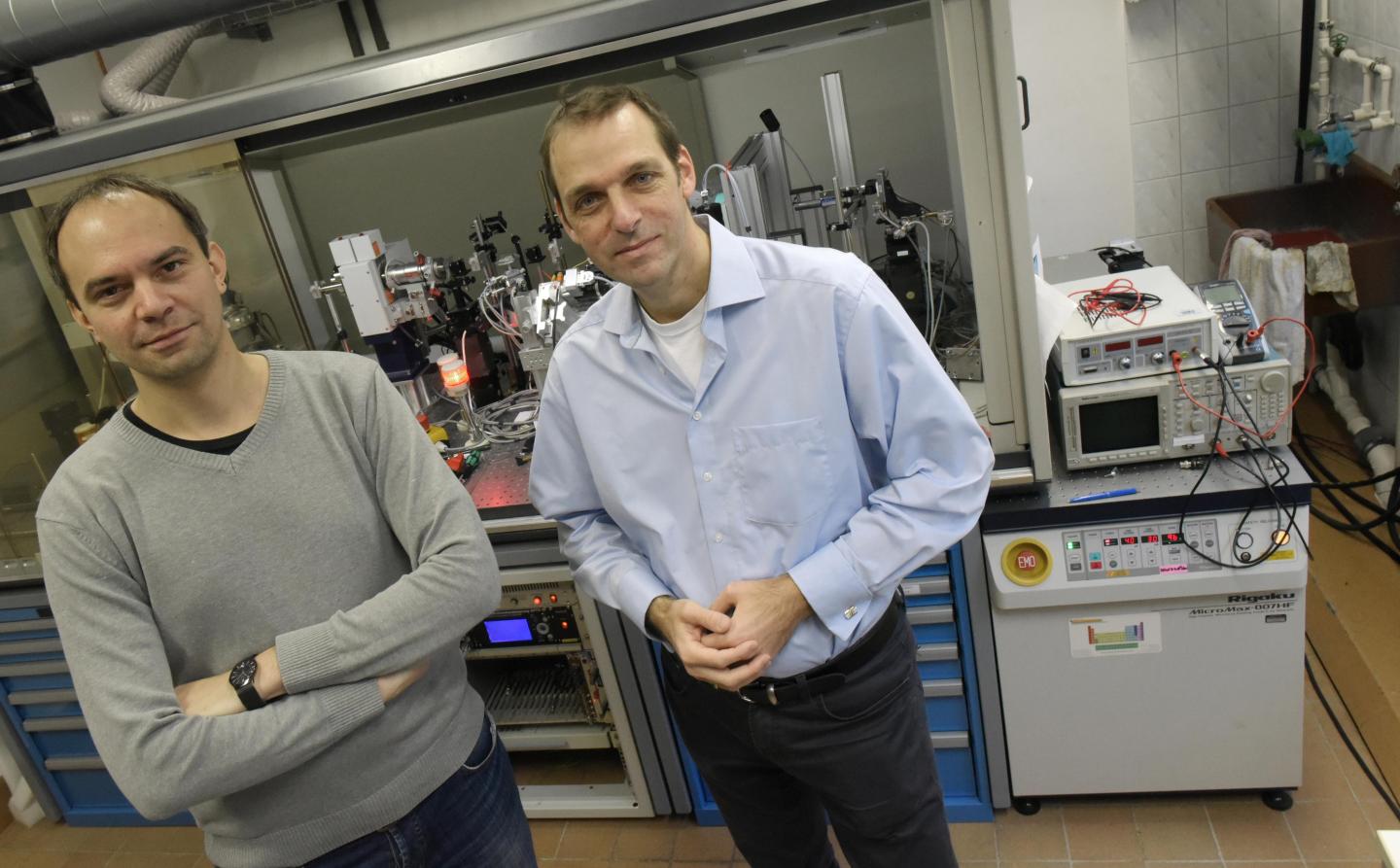New research group at the University of Jena combines theory and experiment to demonstrate for the first time certain physical processes in a quantum vacuum

Credit: Image: Jan-Peter Kasper/FSU Jena
(Jena, Germany) For most people, a vacuum is an empty space. Quantum physics, on the other hand, assumes that even in this lowest-energy state, particles and antiparticles still fluctuate. This is an assumption for which no clear evidence has been provided as yet. A new research group at the University of Jena has now begun work to provide experimental evidence of the processes at work in the supposed vacuousness, more than 80 years after they were predicted by Werner Heisenberg and Hans Euler. The quantum theorist Prof. Holger Gies leads the group, ‘Probing the Quantum Vacuum at the High-intensity Frontier’, a name that in itself describes the aim of the research. In addition to Friedrich Schiller University in Jena, the Helmholtz Institute Jena (HIJ) and the universities in Düsseldorf and München (LMU) are also involved in the project envisioned for six years. The German Research Foundation is providing around two million euros for the first three-year phase, which, among other things, will pay for nine doctoral positions, five of which will be in Jena.
Light makes phenomena in ‘vacuum’ visible
In an attempt to describe the research goal in simple terms, the experts say that the research group wants to excite the quanta, using strong fields. They want to use high intensity lasers to detect quantum vacuum processes, which form the lowest-energy state, or ground state, of nature. “What is special about our team is the close interaction between fundamental theory and cutting-edge experiments,” explains Dr Felix Karbstein, a theorist at the HIJ. He is working on precise predictions for observables in which the transient particle-antiparticlefluctuations leave their traces.
Meanwhile, the experimental physicists in Jena, together with their colleagues at the LMU, are working on the methods for providing the practical evidence. To this end, they are developing and combining high-performance lasers with innovative, precise measurement methods, so that these fleeting processes in a vacuum can be measured.
So far, there have been no light sources powerful enough for experimental testing. The modern high intensity lasers used in the experiments are now approaching the required laser power. For this reason, the experiments are being conducted not only in Jena and Munich, but also using the European X-Ray Free-Electron Laser at DESY in Hamburg.
The quantum vacuum phenomena that Gies and his team want to demonstrate are regarded in modern physics as simultaneously fundamental and exotic. These include, for example, multiphoton pair production from vacuum or light scattering phenomena, such as quantum reflection. However, the Jena research group is not alone in trying to pin down these elusive events. “We are engaged in an international competition,” says Holger Gies. But the physicist is “very hopeful, because I have great confidence in my experimental colleagues”, and he hopes that the research group, due to the exceptionally close interaction between theory and practice, will be the first to provide the evidence.
Using properties of the vacuum as building blocks
The verification and an understanding of the vacuum phenomena would be significant not just for quantum physics. Modern high-performance lasers and precise measuring methods are now an intrinsic part of medicine, life sciences and materials research. In future, the results could therefore be helpful in developing devices that use the properties of the vacuum as building blocks. “In this way, in studying the quantum vacuum, we basic researchers come comparatively close to a practical application,” says Gies. In addition, there is even the possibility of finding clues to candidates for the mysterious dark matter, which is responsible for structure formation in the universe, but could also leave traces in the quantum vacuum. However, the hoped-for results must first be obtained, and the research group is now redoubling its efforts to uncover the secrets of the quantum vacuum.
###
Media Contact
Axel Burcardt
[email protected]
Original Source
https:/




